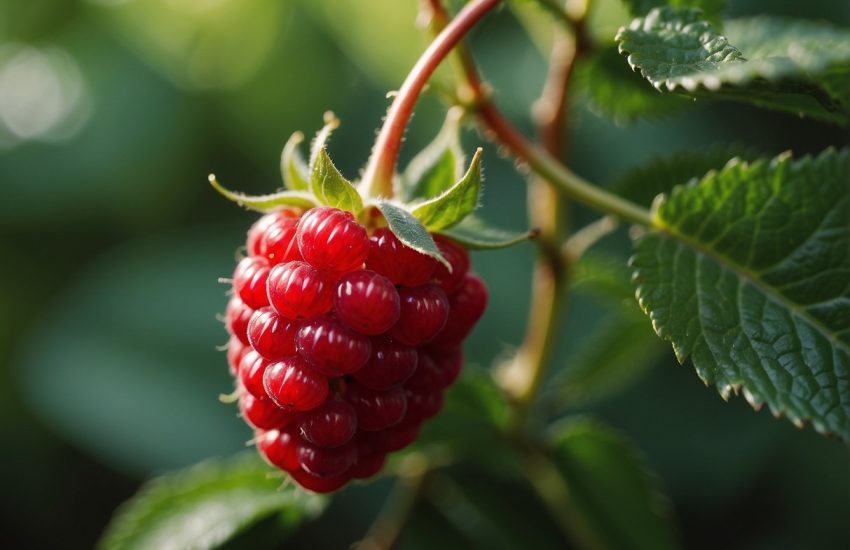Purple Berry Plants: A Guide to Identifying and Growing Them
A plant with purple berries is a rare and fascinating sight in the natural world. These berries are not only aesthetically pleasing, but they also have several practical uses. The Callicarpa, commonly known as the American beautyberry, is one such plant that produces stunning clusters of purple berries.

The American beautyberry is a deciduous shrub that is native to the southeastern United States. It can grow up to 6 feet tall and wide, and blooms small pink flowers in the summer. However, it is the berries that truly make this plant stand out. The vibrant purple color of the berries can last well into the fall, providing a beautiful pop of color in the garden.
Aside from their beauty, the berries of the American beautyberry also have practical uses. They are high in antioxidants and have been used in traditional medicine to treat a variety of ailments, including fever, rheumatism, and skin irritation. The berries can also be used to make a natural insect repellent, as the compounds in the plant are known to repel mosquitoes and other pests.
Planting and Growing Conditions

Selecting the Right Location
When choosing a location to grow plants with purple berries, it is important to consider the amount of sunlight the plant will receive. Most plants with purple berries prefer full sun, but some can tolerate partial shade. It is also important to consider the soil type, pH, and drainage. Plants with purple berries generally prefer well-drained soil with a pH between 5.5 and 7.0.
Soil Preparation and Planting
Before planting, it is recommended to prepare the soil by adding compost or other organic matter to improve soil structure and fertility. This will help the plant establish a strong root system and promote healthy growth. When planting, make sure to dig a hole that is slightly larger than the root ball of the plant and backfill with soil. Water the plant thoroughly after planting.
Watering and Maintenance
Plants with purple berries require regular watering to ensure they stay moist but not waterlogged. It is important to avoid overwatering, as this can lead to root rot and other issues. Applying a layer of mulch around the base of the plant can help retain moisture and suppress weeds.
Maintenance for plants with purple berries is generally low. However, it is recommended to prune the plant in late winter or early spring to remove any dead or damaged branches and promote healthy growth. These plants are generally hardy and drought-tolerant, making them a great addition to any garden.
Wildlife and Cultivation

Attracting Birds and Butterflies
Plants with purple berries are a great addition to any wildlife garden. They attract a wide range of birds and butterflies, making your garden a hub of activity. These plants provide a source of food for wildlife, especially during the winter months when other food sources are scarce.
One of the best ways to attract birds and butterflies to your garden is to plant a variety of species that bloom at different times of the year. This ensures that there is always a source of nectar or pollen available for wildlife. Some popular choices for attracting birds and butterflies include elderberry, chokeberry, and beautyberry.
Propagation and Cultivars
Propagation of plants with purple berries can be done through cuttings or seeds. Cuttings are taken from healthy plants during the dormant season and rooted in a well-draining soil mix. Seeds can be sown in the fall or spring and require a period of cold stratification before germination.
There are also many cultivars of plants with purple berries available on the market. These cultivars have been bred for specific traits such as increased fruit production, larger berries, or improved disease resistance. Some popular cultivars include ‘Autumn Magic’ black chokeberry, ‘Issai’ hardy kiwi, and ‘Concord’ grape.
Cross-pollination is important for fruit production in many species of plants with purple berries. It is recommended to plant at least two different varieties of the same species to ensure good pollination. Some species, such as blueberries, require specific varieties for cross-pollination.
In conclusion, plants with purple berries are a great addition to any wildlife garden. They attract a wide range of wildlife and provide a source of food during the winter months. Propagation can be done through cuttings or seeds, and there are many cultivars available on the market. By planting a variety of species that bloom at different times of the year and ensuring good cross-pollination, you can create a thriving wildlife garden.



Where can I buy this plant berry’s
Checkout or list of national nurseries here. You should be able to find a reliable nursery near your specific location.
-Plant Native Team